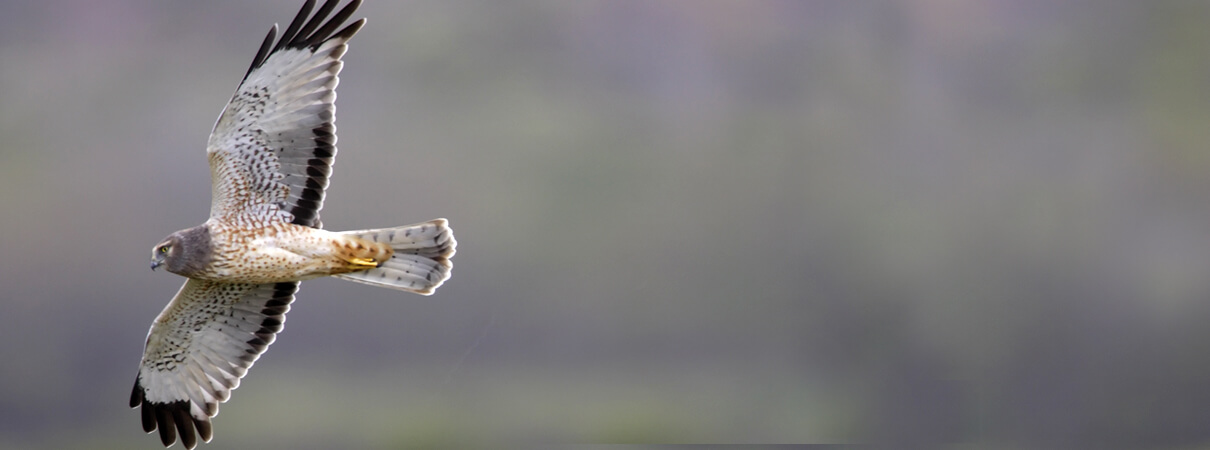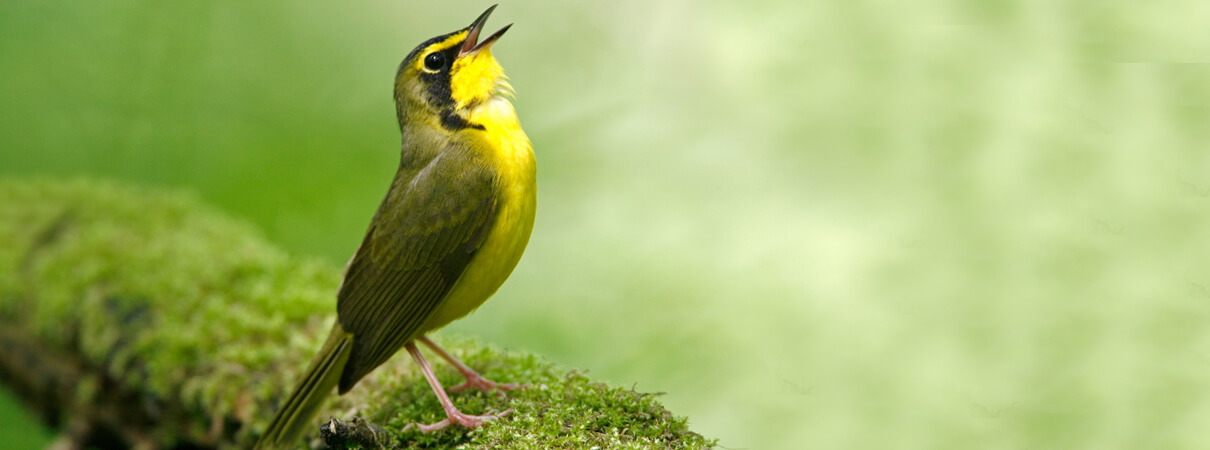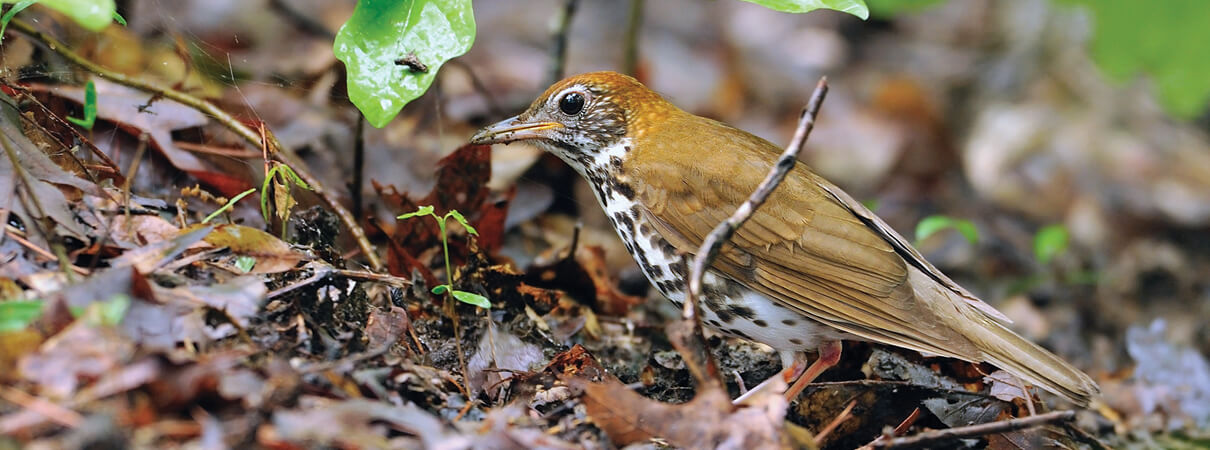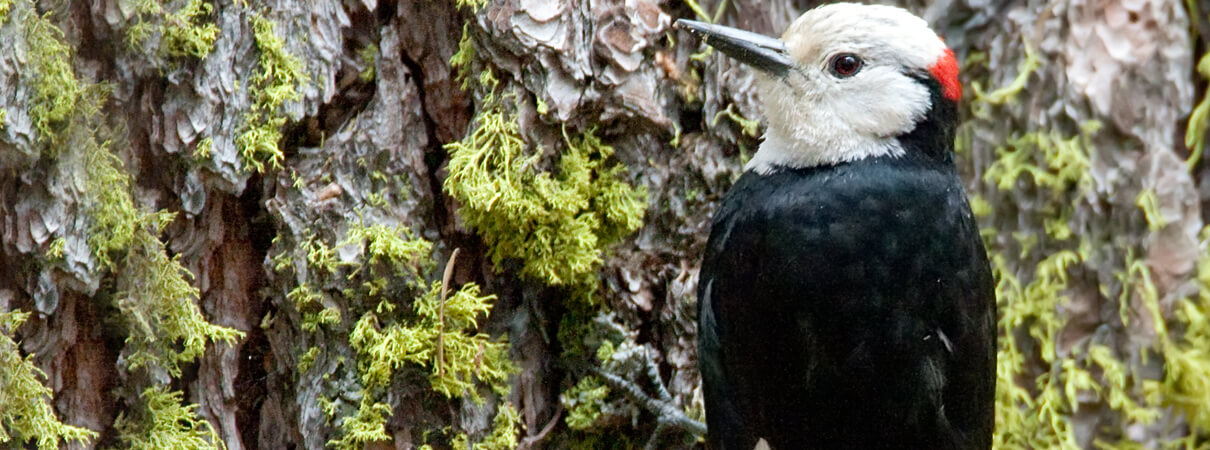Species Maps 2.0 — Using eBird to Understand Bird Distribution
Look up Kentucky Warbler or Wood Thrush in a traditional field guide and you'll find a range map that indicates where the bird is likely to be found in the region covered by the guide. It's a handy feature but a limited one, only as good as the data available when the field guide went to press.

Cornell's eBird collects sightings of birds — such as this Northern Harrier — from all over the world, and uses that data to refine and redraw species maps. Photo © Michael Stubblefield
Many birds, however, are always on the move. And their ranges may also shift under pressure from habitat change, climate change, and other factors. To address this, Cornell Lab of Ornithology's eBird project has created a new and flexible way to understand the fluid nature of bird movement and migration. The program is supported by a huge and growing number of individual bird sightings made by citizen scientists and then uploaded by them to a public database.
As that database grows, it feeds increasingly sophisticated models that let us see migration happen in more or less real time — and may even eventually grant us the ability to understand how migration changes over time. Those insights can be put to use in the field by American Bird Conservancy and its partners as we work to conserve birds throughout their life-cycles.
That as-it-happens knowledge makes all the difference. “Birds are moving and adapting to the landscape,” says Marshall Iliff, one of the eBird project leaders at the Lab. “To truly understand how bird ranges are changing, it has to be real-time.”
Checking Data for Accuracy
A database is only as robust as the data it contains. Since 2002, when eBird launched, more than 250,000 participants have contributed sightings. Some 15,000 to 20,000 people submit data each month. To make sure eBird contains the most reliable information, a team of about a thousand, mostly volunteer reviewers checks submissions for accuracy.
Sign up for ABC's eNews to learn how you can help protect birds
Photo and audio technology make the vetting process easier than it would have been 20 or 30 years ago, when bird identification relied on an observer's memory or impressions and field notes. “A photo or an audio recording that conclusively proves the species is kind of the gold standard,” Iliff says. “Lacking that, a description of the bird and its plumage and vocalizations can suffice.” By partnering with the Lab's Macaulay Library, eBird data can now be reinforced by sound recordings and photographs, which also become part of Macaulay's extensive collections.
A Global Endeavor
Cornell's eBird collects sightings from all over the world, though some regions have plenty of gaps left to fill. “Africa's a pretty big blank spot,” Iliff says. “We're seeing a lot of exciting growth in new areas,” such as Brazil and India. Taiwan has an active group while the rest of China is lagging behind, probably because of internet restrictions there.

The eBird map below, generated on April 26, 2017, shows the extent of Kentucky Warbler (above) distribution — including northward migration — for the month, as of that date. Each purple block indicates one or more sightings, with more frequent sightings represented by darker purple coloring. Photo by William Leaman / Alamy Stock Photo

Language is not a barrier. The eBird website can handle about 15 different languages now, thanks to volunteer translators. “That's obviously really important for engagement around the world,” Iliff says. “The next challenge for us is Hebrew, which is going to be our first right-to-left language.”
Eventually, given enough contributors sharing enough data from enough places, eBird will give us a comprehensive picture of birds' distributions and migratory patterns around the world, how those ranges and patterns are shifting over time, and where the biggest pressures on different species are. That knowledge will boost ABC's on-the-ground efforts to protect both resident species and migratory birds.
Real-Time Data for Real-Time Change
“Probably now more than ever, bird ranges are not static,” especially given the enormous, landscape-scale shifts we've seen over the last 50 to 100 years, Iliff says. “Birds are colonizing new areas” as habitats change and old barriers disappear or new ones arise. As an example, he cites the movement of open-country birds, including some hawk and heron species, which have traveled north from parts of South America into Central America as the once-contiguous forests that blocked their path have disappeared.

Data collected with the help of eBird volunteers show that wood thrush are significantly more concentrated on their wintering grounds than their summer breeding grounds. This information may help guide future conservation decisions for the species. Photo by Ed Schneider
“Collectively our minds continue to be blown by the mobility of birds and the unusual things we see,” Iliff says. “One thing we've started to see that's very clearly related to climate change is more interchange between the Pacific and the Atlantic.” As ice disappears, birds are using the Northwest Passage to move back and forth. For instance, Northern Gannets, an Atlantic species, have turned up in the Pacific in the last few years, while Tufted Puffins, a Pacific species, have been spotted in Maine.
Such patterns will become clearer and easier to analyze as eBird grows. “We're right on the cusp of being able to assess trends with eBird data,” Iliff says.
Mapping for Conservation with eBird Data
One of the most exciting things about eBird is its ability to do what Iliff calls “fine-grained habitat mapping.” Traditional range maps aren't good at that. The Cornell Lab has been able to develop migration maps based on eBird that can predict how abundant certain birds will be at certain times in certain habitats, which provides much more accurate information on where conservation needs to happen.
Ken Rosenberg, Applied Conservation Scientist at the Lab, is leading ABC and Cornell's Science to Action partnership. He says the next challenge will be to connect eBird's data with ABC's BirdScapes initiative, which identifies landscape-level areas for conservation emphasis. “The idea is that the datasets and the models can really help us drill in and define BirdScapes — and identify some that we don't even know about yet,” Rosenberg says.

Data collected by eBird volunteers demonstrated that 80 percent of the White-headed Woodpecker's distribution is on U.S. Forest Service land. Photo by Ashok Khosla
The knowledge gleaned from eBird has already informed major conservation reports and planning. Recent State of the Birds reports, for instance, have drawn on it, and Rosenberg says the Lab used eBird data to develop reports for federal agencies that showed the distribution of protected species on public versus private lands. The data demonstrated, for example, that 80 percent of the White-headed Woodpecker's distribution is on U.S. Forest Service land. “That was very compelling to the agencies,” Rosenberg says.
Another model revealed that Wood Thrush are 24 times more concentrated in the winter than in the summer. “It emphasized how magnified the threats are in the winter,” Rosenberg says. Armed with that knowledge, conservationists can deploy their resources to the birds' best advantage.
Migration maps and models built with eBird data are “revolutionizing how we think about bird distributions,” Rosenberg says. “Those animations showing birds going up and down the continent are so new and different and compelling, and I think we're just scratching the surface of what we can do with that information.”
You can be an eBirder! To join, simply visit ebird.org and click on “My eBird” to create an account and begin logging your observations.
 Jennifer Howard is ABC's Director of Public Relations. A former reporter for The Chronicle of Higher Education and a former contributing editor of The Washington Post, she has published journalism and fiction in a variety of publications. She lives in Washington, D.C., with her family, including two indoor-only cats.
Jennifer Howard is ABC's Director of Public Relations. A former reporter for The Chronicle of Higher Education and a former contributing editor of The Washington Post, she has published journalism and fiction in a variety of publications. She lives in Washington, D.C., with her family, including two indoor-only cats.


















































